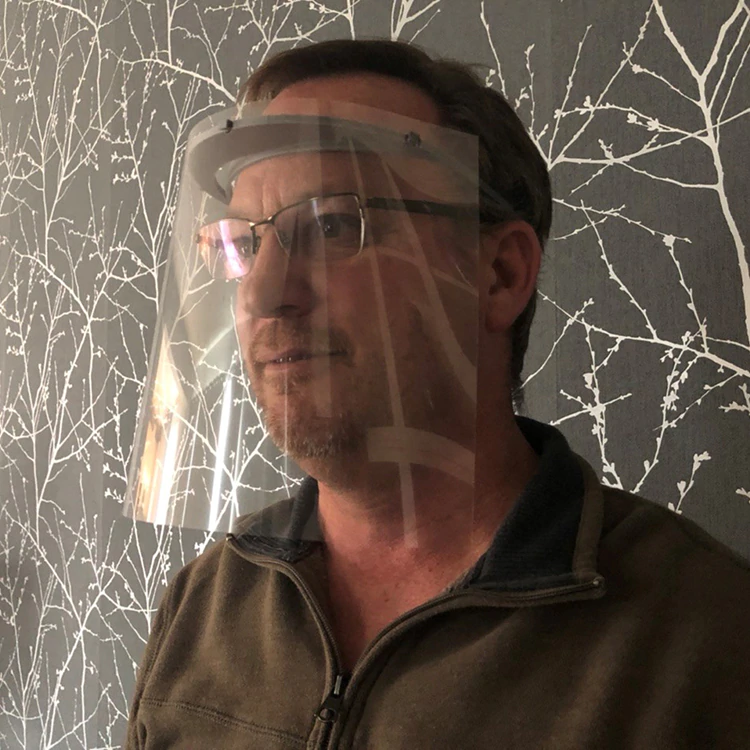Innovators Unite: Unexpected Partners Join Forces In Fight Against Covid-19
May 7, 2020 — Medtronic is creating new ways of working across industries to help bring innovators together and speed the global response to the COVID-19 pandemic. “COVID-19 is presenting the...
May 7, 2020 — Medtronic is creating new ways of working across industries to help bring innovators together and speed the global response to the COVID-19 pandemic.
“COVID-19 is presenting the world with an unprecedented challenge,” said Medtronic CEO Geoff Martha. “So we must take unprecedented steps to meet that challenge. No one company can deliver all that is needed. We will only defeat the virus by acting in unison, with smart and focused strategies for production, allocation, and resourcing.”
ACCELERATING PRODUCTION. REDUCING THE SPREAD.
Medtronic is collaborating across industries to help bring innovators together and speed the response to the COVID-19 pandemic. Since Medtronic started publicly sharing the design specifications for its Puritan Bennett™ 560 (PB560) ventilator, it’s received more than 100,000 registrations for the information, ranging from innovative engineers and work groups to large-scale manufacturers.
Those helping accelerate meaningful progress around ventilator production include Baylis Medical Company, Inc. in Ontario, Canada; Foxconn Technology Group, a global manufacturer with operations around the world; and Vingroup Joint Stock Company in Hanoi, Vietnam. Medtronic is working with Space Exploration Corporation (SpaceX) to build a key subcomponent, the PSOL valve, and with Intel Corporation to help source PCBA circuit boards, to help ramp up production of critical care ventilators — the Medtronic Puritan Bennett™ 980 (PB980) and 840 (PB840) ventilator series. And announced in late April, Toronto-based Celestica will start producing subassemblies for the PB980 ventilator.
While key collaborations help ramp up ventilator production, another aims to reduce the spread of the virus.
Medtronic is currently in limited market release of a new remote access capability for PB980 ventilators with a number of hospitals in the United States. Accelerated by collaborating with Intel Corporation, this remote access feature enables clinicians to adjust ventilator settings outside patient rooms. This may reduce healthcare worker and clinician exposure to the coronavirus in an isolation space. The remote access feature has not been 510(k) cleared by the U.S. FDA, and instead is made available pursuant to FDA Guidance during the COVID-19 emergency.
INNOVATION STARTS WITH INDIVIDUALS
Medtronic is also encouraging individuals — both inside and outside the company — to share ideas on how to meet the evolving needs of healthcare systems. “We’ve added a specific COVID-19 path for idea submissions on our public website,” said Mike Hess, vice president and technical fellow at Medtronic. “Ideas will be funneled to our R&D experts for review.”
The effort is not limited to building medical devices; Medtronic is also collaborating on new methods of protecting doctors and nurses treating patients on the frontlines of the COVID-19 fight.
Medtronic is joining Stanford University, University of Minnesota, Boston Scientific, and other institutions and companies to deliver full-face scuba masks for use in clinical settings to help protect healthcare providers and patients. The joint team will design and build prototypes, collect clinical feedback, obtain regulatory approval, and distribute the face masks to meet urgent healthcare needs. The team will make public all design and manufacturing information so other companies can build the face masks to meet global demand.
Medtronic was also among the first to join a unique partnership of innovators using 3D printers to help create another type of new face protection for caregivers.
“I’m just glad we can help,” said Scott Hanson, a 3D-printing product development manager at Medtronic and a key player in planning a new face shield for healthcare workers. “It’s a huge motivator for me to be able to contribute .”
I’m just glad we can help. It’s a huge motivator for me to be able to contribute.
Medtronic 3D-printing product development manager, Scott Hanson
Hanson immediately went to work at his home computer after getting an email from a local hospital. The message implored him to find ways to use the company’s 3D printing power to ease the crushing shortage of protective face masks for healthcare workers.
“I found a design for face shields online and started tinkering,” Hanson said. He reached out to Evan Hochstein of the 3D printer maker Stratasys on a Friday. Both had received the same message from the same local doctor. The pair worked remotely with their home 3D printers, building and refining prototypes until, by Sunday night, they had a plan for a face shield to protect doctors and nurses while they treat COVID-19 patients.
Their plan included use of a visor, or frame, that is ingenious for its simplicity. The visor is created on a 3D printer; it has three hooks, spaced exactly the same distance apart as the holes in a three-ring binder. Transparent film is cut into 8”x12” sections, with three holes punched to match the 3D-printed visor. The shield snaps into the visor/frame and a rubber band holds it on a person’s head.
Medtronic and Stratasys started printing the new visors immediately.
“It’s all-hands-on-deck,” said Scott Drikakis, healthcare segment leader at Stratasys. “I’ve never seen anything like it.”
THE 'COVID COALITION'
Stratasys immediately posted the specs on its website and urged all of its 3D printing partners to copy it; so far it’s been downloaded “thousands of times,” according to Stratasys spokesman Aaron Pearson. Other Stratasys partners fabricate the transparent shields; Medtronic and others arrange with vendors to cut them to size. Stratasys then ships the components to hospitals, where medical staff assemble them. Word spread quickly; hospitals ordered 300,000 of the new shields in less than a week. And the National Institutes of Health (NIH) has reviewed, approved, and recommended the design.
Stratasys refers to the 100+ companies now working on the project as the “COVID Coalition.”
“Medtronic was the first partner to step up and say, ‘Here’s how we can help and here’s how we’re going to keep helping,’” Drikakis said. “They’ve been a blessing.”
“These are unique times that we’ll all remember the rest of our lives,” said Mark Bucheger, engineering director in the Cardiac Rhythm and Heart Failure (CRHF) division at Medtronic. “The usual work we do is important. But this extra effort to help our hospitals operate and protect our healthcare workers is more important than ever.”
Medtronic is donating its printers and printing staff to the cause and has also paid for the cost of cutting thousands of transparent shields. With so many companies contributing, Stratasys estimates its cost of producing shields at $2 each. Stratasys covered the cost of producing the first 20,000 shields — it will now begin charging hospitals $2 each just to cover its expenses.
LIVING THE MISSION
Collectively, 10 Medtronic 3D labs from the Cardiovascular Group (CVG), Restorative Therapies Group (RTG), and Minimally Invasive Therapies Group (MITG) plan to churn out more than 800 visors per week.
Hanson is particularly happy to know some of them are winding up at his own local hospital.
“I’ve lived in this community for more than 20 years and the people at that hospital have helped my family more than once,” he said. “I have a chance now to return the favor, so I’m going to do it.”
LO01-05042020




